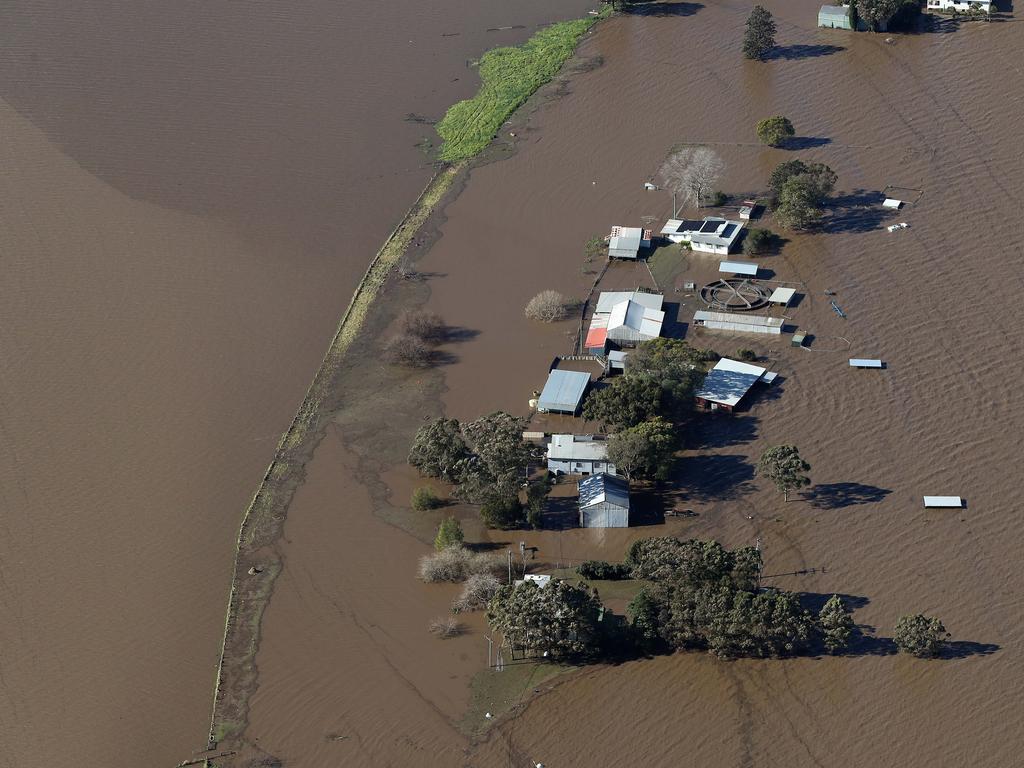Perrottet in hot water over $1.6bn plan to raise dam wall as community anger over floods grows
Dominic Perrottet is under pressure to consider alternatives to the $1.6bn plan to raise the height of the Warragamba Dam wall as community anger grows over government floods failure.

NSW Premier Dominic Perrottet is under mounting pressure to consider alternatives to the $1.6bn plan to raise the height of the Warragamba Dam wall, including lowering the water level in the dam, as community anger grows over government failure to act on successive floods in Sydney.
Some government MPs believe Western Sydney Minister Stuart Ayres’ all-or-nothing push to raise the height of the wall has no immediate chance of success and fear frustrated voters will punish the Coalition at the election in March.
Water management experts say lowering the level of the dam by 5m – and pre-release ahead of flooding events – will reduce flooding risks and is viable now that the city has a desalination plant that can be brought online in the event of drought.
The government has been pushing for more than a decade to raise the wall of the dam by up to 14m to aid in flood mitigation, a plan opposed by those who argue it would submerge parts of the Blue Mountains World Heritage Area and Aboriginal heritage sites.
The Albanese government is believed unlikely to agree to a 50-50 funding split proposed by Mr Perrottet last week and the project cannot proceed without federal environmental planning approval.

On Friday, Mr Ayres, one of the most vociferous proponents of raising the dam wall, ruled out lowering water levels or pre-releasing water before predicted flooding because the large volume of water “could cause earlier downstream flooding”, noting that under current operating rules, Warragamba Dam could not be used for flood mitigation.
MPs are acutely aware, however, that the government will be under significant challenge at the March election to counter perceptions that after 12 years in office and multiple inquiries, it has failed to act on successive flood crises, including four catastrophic events in Sydney in the past two years.
There is also concern at a third consecutive La Nina forming later in the year, bringing flooding rains for the summer.
Transport Minister David Elliott, whose Baulkham Hills electorate is regularly hit by floods, has privately argued for dam water levels to be reduced in advance of expected flooding, pending moves to raise the dam wall. A confidential cabinet submission obtained by The Australian last year revealed lowering the water level in the dam could save up to 1800 homes in the event of overflow.
Former deputy director-general of the NSW State Emergency Service Chas Keys, who is against raising the height of the dam wall, said: “There’s a lot to be said for lowering the water level, and I haven’t always thought that.
“It doesn’t have any consequences on the habitat upstream, and you can replace the problem it would create in a drought with desalination. We have a desalination plant sitting there idle, and we could be doing a lot more by way of recycling water.”
A NSW parliamentary inquiry, which had unanimous support including from Liberal and National Party MPs, recommended the government consider lowering the full supply level of the dam, voluntarily acquiring vulnerable properties and restricting future development on flood-prone land.
Independent NSW MP Justin Field, who chaired the inquiry, said lowering the full supply limit was a credible option. “You save a ton of money which you can put into other things you’re going to have to do anyway,” he said.
“Given catchments are totally saturated and every bit of water that falls will run off, we could have afforded to reduce the full supply limit temporarily over this last period; it would have made sense because we knew any rain was going straight down the river system.”








To join the conversation, please log in. Don't have an account? Register
Join the conversation, you are commenting as Logout